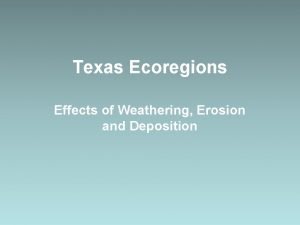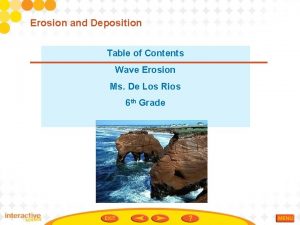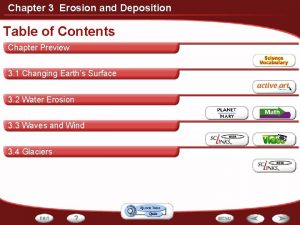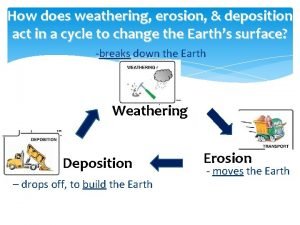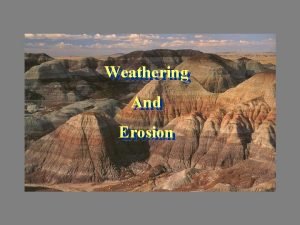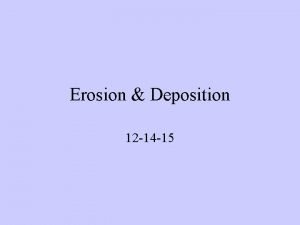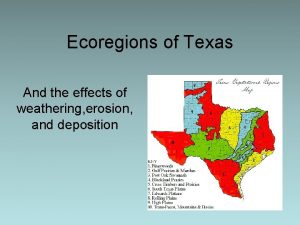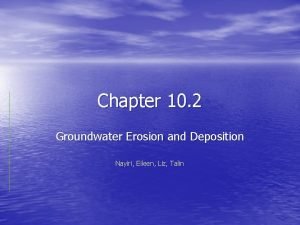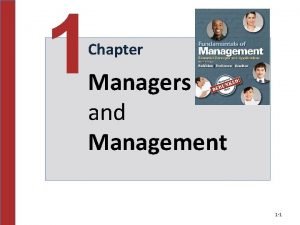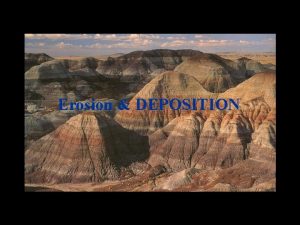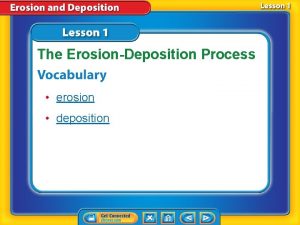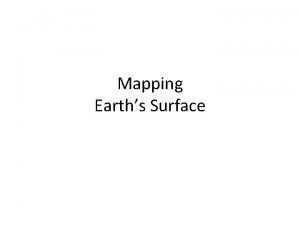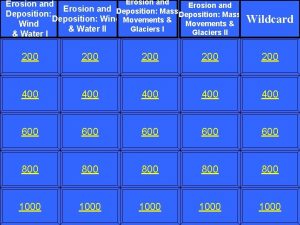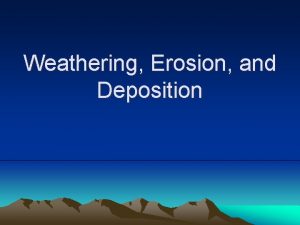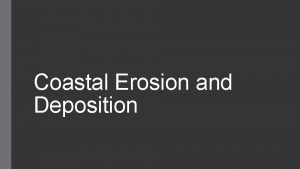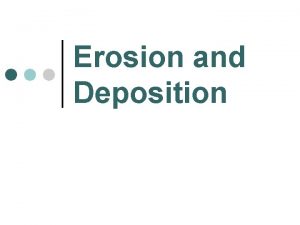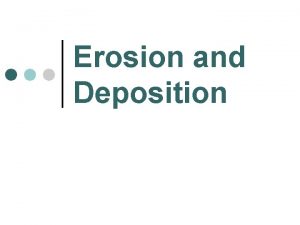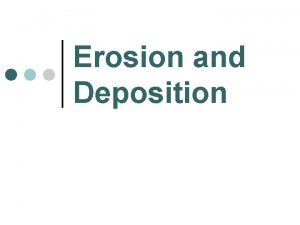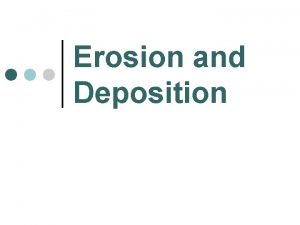Erosion And Deposition Chapter 6 Reshaping Earths Surface












- Slides: 12

Erosion And Deposition Chapter 6

Reshaping Earth’s Surface • Constructive processes build up features on the Earth’s surface. • Destructive processes tear down features on the Earth’s surface.

Continual Process Change • Weathering is the breakdown of rock. • Erosion is the removal of weathered material from one location to another. • Deposition is laying down sediments with gravity, running water, wind and glaciers. • High energy- sediment is transported quickly. • Low energy- small sediments get deposited.

INTERPRETING LANDFORMS • Features such as structure, elevation and rock exposure give clues about how a landforms. • Tall, jagged structures are usually formed by erosion. • Low or flat landforms are often formed by deposition. • At the base of a mountain slope a stream will deposit an apron of sediment called an alluvial fan. • Deposition in a riverbed occurs where the speed of the water decreases. • As glaciers melt, they can create deposits called eskers and moraines.

Shaping the land with water and wind • Destructive processes such as weathering and erosion produce tall jagged landforms. • Constructive processes such as deposition produce flat, low lying landforms. • Water and wind are important agents of weathering, erosion and deposition.

Water, Erosion and Depostion • The speed of water and the depositional environment often affect the shape of the land. • The erosion produced by the stream depend on the streams energy. • Currents and waves constantly produce coastal erosion.

• Acidic water carves out spaces in underground rock, causing caves. • Structures in cave that form by deposition are called stalactites and stalagmites. • Flowing water deposits sediment as the water slows. • A delta is a large deposit of sediment that forms where a stream enters a large body of water.

• Damage caused by water erosion can be affected by the way people use the land. • To reduce beach erosion people build retaining walls, or groins, which trap sediment and reduce erosive effects of longshore currents. • A floodplain is a wide, flat area next to a river that usually remains dry. • A levee- a long, low ridge of soil along a river- can decrease flooding on a floodplain.

Wind erosion and deposition • Abrasion is the grinding away of rock or other surfaces as particles carried by wind, water or ice scrape against them. • A dune is a pile of wind blown sand. • Loess is a crumbly, windblown of silt and clay. • People can slow the affects of wind erosion by planting rows of trees at the edge of farm fields to slow wind.

Mass Wasting • Mass wasting is the downhill movement of a large mass of rocks or soil because of gravity. • Mass wasting usually occurs on the side of a hill when the soil is soaked with rainwater. • Thick vegetation can prevent mass wasting. • A landslide is the rapid downhill movement of soil. Loose rocks, and boulders. • Erosion due to mass wasting continues as long as the force of gravity is greater than other forces holding the rocks and soil in place. • Building on a steep slope, removing vegetation and heavy machinery can increase the chances of mass wasting

Glacial Erosion and Depostion • A glacier is a large mass of ice that formed on land moves slowly across earth’s surface. • Glaciers cause erosion as they move carving grooves in underlying surfaces of Earth. Glacial erosions cause sharp ridges called aretes and U-shaped and hanging valleys. • Glaciers deposit material when they melt. • Till is a mixture of sediment deposited by glaciers. • A mound or ridge of sediment deposited by a glacier is a moraine.

• Global warming is the gradual increase in the Earth’s average temperature. • Human activities contribute to global warming. • Because of global warming, glaciers have been melting, which leads to a rise in sea level.
 How does erosion affect edwards plateau
How does erosion affect edwards plateau Weathering in piney woods
Weathering in piney woods South texas plains deposition
South texas plains deposition Table
Table Explain how water erosion by groundwater can form a cave.
Explain how water erosion by groundwater can form a cave. Weathering erosion and deposition
Weathering erosion and deposition Deposition science
Deposition science Difference between erosion and deposition
Difference between erosion and deposition Diagram of erosion and deposition
Diagram of erosion and deposition South texas brush country weathering and erosion
South texas brush country weathering and erosion Groundwater erosion and deposition
Groundwater erosion and deposition Factors reshaping and redefining management
Factors reshaping and redefining management Factors that are reshaping and redefining the manager's job
Factors that are reshaping and redefining the manager's job

